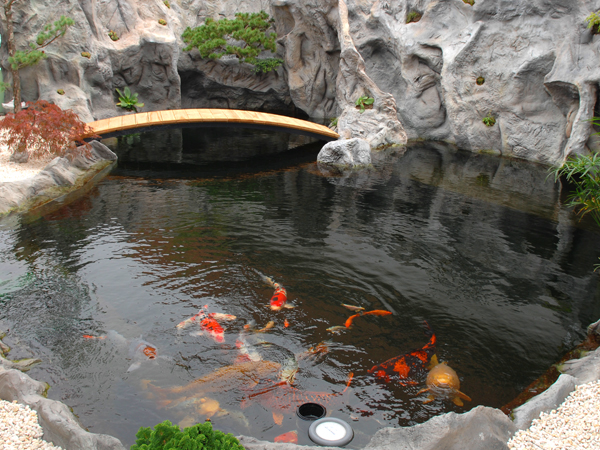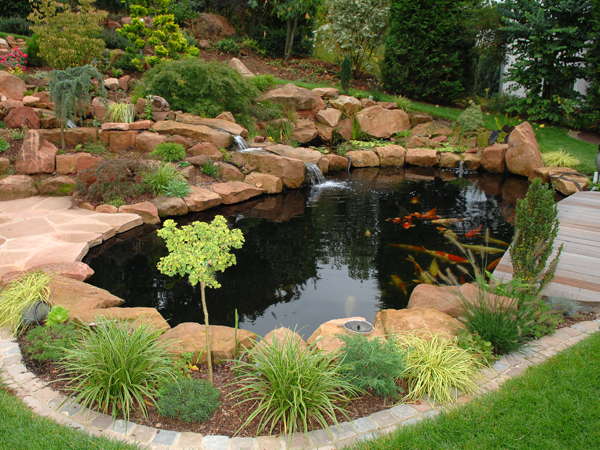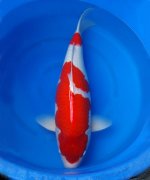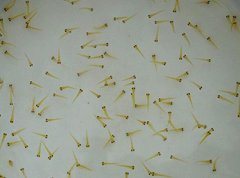Selection of juvenile koi and daily culture of koi
Koi culture-- sufficient dissolved oxygen
Koi is a large ornamental fish, which eats more than other ornamental fish, naturally has more feces, and pollutes the water more. If there is enough oxygen in the water (the dissolved oxygen is usually not less than 3mg / L), the fish will live a lively and healthy life.
The water body of koi should be as large as possible, oxygenated enough, and an air pump is usually used for oxygen aeration.
If it is raised in an aquarium, a small air pump of about 10 watts is usually used. 2 to 3 heads of air will be enough.
If the pond is used for culture and viewing, it should be noted that due to the deep water in the pool and the high pressure at the bottom of the water, the ordinary small air pump can not hit the bottom of the air, so the effect of inflation is not good. At this time, you should use a larger air pump, so that the gas can be pumped up from the bottom of the water, usually more than 60 watts of air pump is needed, and more air heads are installed and distributed, so that the aeration can be more sufficient.
Now, koi culture is usually equipped with biofiltration system, biofiltration oxygen demand is very large, with sufficient oxygen, the effect of biofiltration is good, and the water quality will be better. In the selection of air head, it is best to buy small and dense bubbles, too large bubbles are not helpful to the dissolution of oxygen in water, will only waste resources and increase noise.
Koi Culture-- A High quality and efficient Filtration system
The quality of water quality depends to a large extent on the quality of the filtration system. If the filtration system is good, the water is fresh, and there are few harmful substances in the water, so the fish will live a healthy and lively life.

Koi culture-- changing water
Brocade carp do not have high requirements for water for aquaculture. Usually tap water, well water, mountain spring water, river water and lake water that meet the "Water quality Standard for pollution-free Food Freshwater Culture" can be used to breed koi.
When using tap water to cultivate koi, special attention should be paid to the use of tap water except chlorine, because tap water will add chlorine for disinfection and sterilization, and chlorine is harmful to koi. If it is not removed, it is prone to chlorine poisoning and death of fish.
Usually, fresh tap water can be kept for 3 ~ 5 days, or 1 ~ 2 grams of sodium thiosulfate is added to every cubic water, the chlorine in the water can be effectively removed. If well water is used, attention should be paid to detecting the water temperature. When the water temperature suddenly drops or rises by 2 to 3 ℃, koi is easy to get sick.
If the difference in water temperature is too big, fish are apt to catch cold. The most suitable water temperature for koi is 22 ~ 35 ℃. In this water temperature, koi swim actively, have a strong physique and have a strong appetite. If the temperature rises and falls by 7-8 ℃, the fish lie still at the bottom.
If the temperature change is greater, the koi will even die immediately. In addition to paying attention to the water temperature mentioned above, it should also be noted that although the well water is relatively clear, because it is groundwater, it is usually anoxic and should be used after oxygenation. at the same time, the water should be tested for minerals that are harmful to fish, and the pH value should also be tested. Koi is required to live in slightly alkaline water, the more suitable pH is 6.8 ~ 7.5. If the pH value changes too much, the koi will also get sick because of maladaptation.

If the aquaculture water comes from mountain spring water, river water or lake water, you should not only pay attention to the pH value of the water, but also pay special attention to whether the water contains harmful pollutants, especially when using it for the first time, to know if there are pollution sources in the upper reaches of the water source. If possible, it is best to send the water samples to the relevant departments for inspection to confirm that they are qualified.
After a period of breeding, it is necessary to partially replace the culture water in order to keep the culture water fresh.
Especially in summer, when the water temperature is relatively high, in order to make the fish grow faster, the amount of feed will be increased, and the excretion of the fish will increase at the same time. At this time, as the load of the water is increasing, and the water temperature is high, the dissolved oxygen capacity of the water is weakening, so the water quality is particularly easy to deteriorate. When you find that the water in the fish pond (tank) has suddenly become white and turbid, it is time to change the water immediately, otherwise it is easy to die due to lack of oxygen floating head.
If the filtration system is good, it can be replaced once a month or even once a quarter.
If the filtration system is normal, the water should be changed every 15 days.
If there is no filter system, it should be replaced once a day.
When changing water, it should be noted that the amount of water for each change should be 1/5 of the total water volume. More changes in water temperature and water quality will cause disease to the fish. At the same time, the changed water should be clean and free of harmful substances, especially when using well water or mountain spring water.
- Prev

What kind of color is good for koi? what kind of feed do koi eat?
The daily feed of koi is the most important and interesting part of daily management. It is a lot of fun to watch the fish fighting for feed happily by the pond (tank) every day. Feeding is a problem that needs to be paid attention to. Hey, less.
- Next

What species of koi have spirituality? artificial reproduction of koi
Artificial reproduction of koi 1. Brocade carp were propagated naturally and parent fish of the same species with high quality and good pedigree were selected. The ratio of male to female was 1: (2-3) and put into an independent clear pool or cage to allow them to spawn naturally. 2. Koi artificial dry insemination selects the same product with high quality and good pedigree.
Related
- On the eggshell is a badge full of pride. British Poultry Egg Market and Consumer observation
- British study: 72% of Britons are willing to buy native eggs raised by insects
- Guidelines for friendly egg production revised the increase of space in chicken sheds can not be forced to change feathers and lay eggs.
- Risk of delay in customs clearance Australia suspends lobster exports to China
- Pig semen-the Vector of virus Transmission (4)
- Pig semen-the Vector of virus Transmission (3)
- Five common causes of difficult control of classical swine fever in clinic and their countermeasures
- Foot-and-mouth disease is the most effective way to prevent it!
- PED is the number one killer of piglets and has to be guarded against in autumn and winter.
- What is "yellow fat pig"? Have you ever heard the pig collector talk about "yellow fat pig"?

